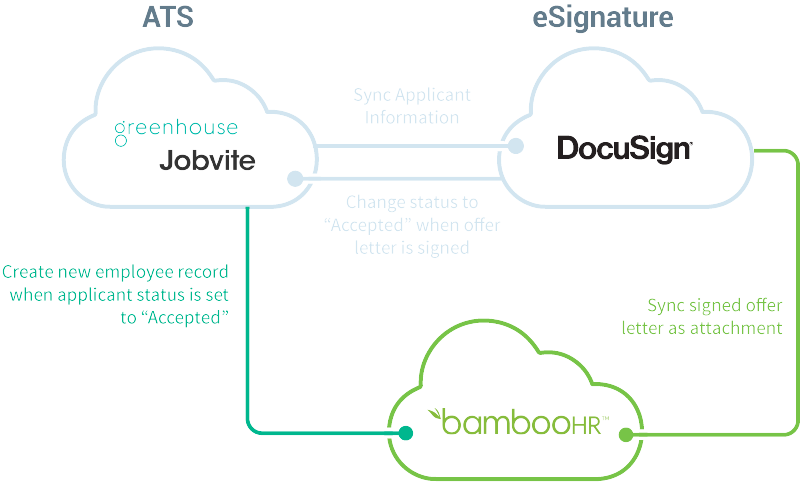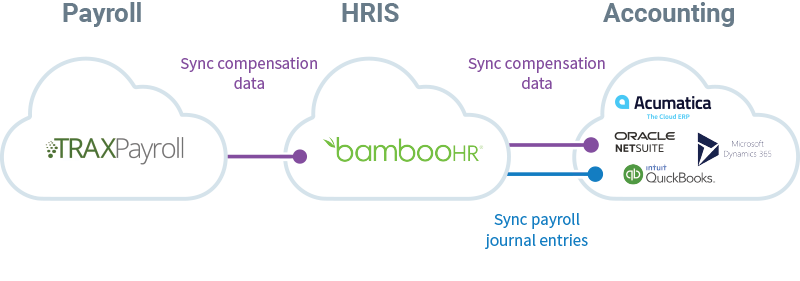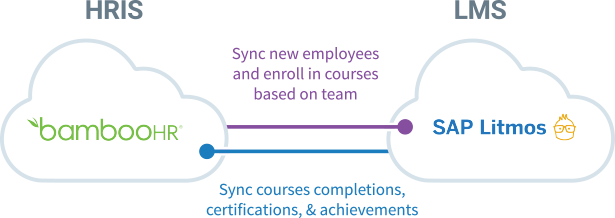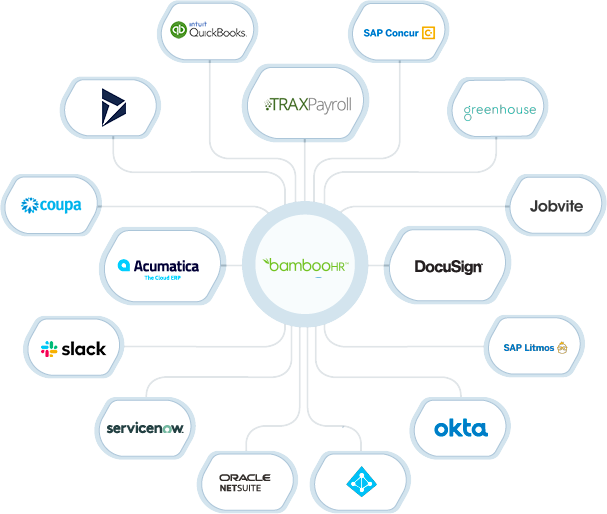Published Jan 7, 2021
3 Ways to Extend BambooHR with Integrations

HR departments live and die by their HRIS, and BambooHR is no exception. Yet even when BambooHR forms the cornerstone of your HR operations, it might surprise you to know that there are ways you can stretch its usefulness even further. That’s because while BambooHR is already essential on its own, you’ll get way more out of it when you utilize it as part of an integrated system with your other applications. The more you silo BambooHR, the more you underutilize its potential.
In this blog post, we’ll show you three examples of enhancing BambooHR’s capabilities by integrating it with other commonly used applications.
Smooth transitions from recruitment to onboarding
Using an ATS system separately from BambooHR leaves a data gap that you need to step over when you officially onboard a new employee. Most HR departments bridge the gap the old fashioned way: setting up the new employee’s profile on BambooHR manually. Manually keying in data isn’t the most efficient use of your staff’s time, especially if you’re in the midst of a hiring spree. As the author of this blog post can attest to from personal experience, it’s not always the best for your new employees either: keying in a misspelled name, DOB, or address is a common source of headache when onboarding.

By integrating BambooHR with your ATS, you can skip the manual data entry entirely. All you need to do is flag an applicant as “Hired” in your ATS, and that new employee’s data will be synced to set up a new profile in BambooHR. Because applicants directly submit their own information through the ATS, eliminating some of the intermediaries gives your new employee more agency over the information in their profile.
You can even set up further integrations with electronic signature platforms like DocuSign to automatically archive copies of offer letters and other signed documents as attachment once the new profile is created in BambooHR. How cool is that?
Booking payroll
For organizations that use it, BambooHR will typically serve as the system of record for payroll. While it’s a useful reference for employees and HR departments alike, your Finance team will need help porting that information over to an accounting system to properly book payroll expenses. Enter BambooHR integrations with accounting systems.

Training and certification logs
If your organization puts a lot of emphasis on workforce development, BambooHR can be an excellent companion to complement those initiatives. In particular, bidirectional integrations between BambooHR and your LMS can be used to track training and certifications. Take enrolling new employees in mandatory training, for example.

Of course, the benefits are by no means limited to new employees: you can use these integrations to promote continued development for existing employees. If your organization is serious about ongoing training, having a centralized place to log (and give kudos to!) your employee’s growing list of skills and certifications is a win-win for everyone.
Ready to get more mileage out of BambooHR?

BambooHR is an incredible tool for HR departments on its own, but its impact is truly maximized when integrated with other commonly used applications.
If this blog post inspired you to enhance the power of BambooHR, start by thinking of it as the center of your HR system and what role your other applications play in this centralized system. To make the journey easier for you, we’ve got some resources for you:
- Ebook: The Definitive Guide to HR Automations
- BambooHR prebuilt and custom integrations
- HR automation solutions
Happy integrating!




